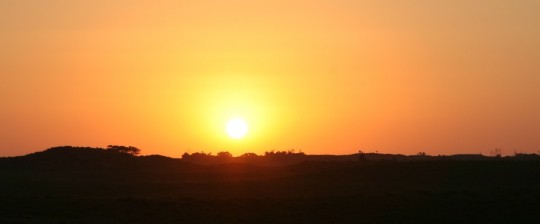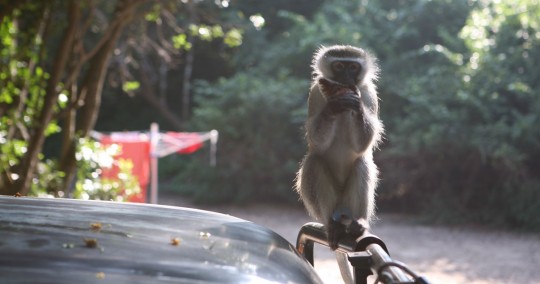
While I wait for the boat to be allowed in the Durban port, I move in a cheaper backpacker, the Banana Hostel (US$13 a night in dormitory), located in the city center. Cockroaches are the primary guests, but there are also some other human inhabitants. Among them Colin, a white South African working in the import and export of copper and gold. We soon become friends. He got lucky with his gold mine in Zambia, sold the precious metal to Dubai, and is now waiting for his cash in Durban.
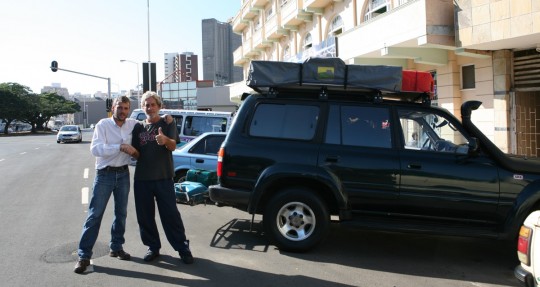
The city has nothing great to take advantage of. The market is interesting, but really nothing compared to the America ones. I know, more you travel, more difficult you are to please. We become friend and wait for days to go by together, drinking beers and taking care of our daily tasks, which is for me going to my clearing agent.
The boat arrives on Saturday, May 1st. I have to wait for Monday to get it out, since customs doesn’t work on weekends. On Monday afternoon, I am finally able to get it out, after a day of running back and forth between the clearing agent, Hamburg Sud and the warehouse. US$1,360 later, I am good to go, and with Colin, I drive to a shop specialized in exhaust pipes. The following morning, they take out my catalytic converter, and replace it by a straight pipe. This will allow me to run on the low quality petrol I will find in Africa. I go to a hardware store, and buy an 11-gallon (40 liters) water tank. Until now, I was using a 7 gallons jerry can, but I suspect water points will be harder to find, so I prefer to go with more reserves. Beside, the jerry can leaked more and more as I was going through the Americas, and getting a new system was overdue.
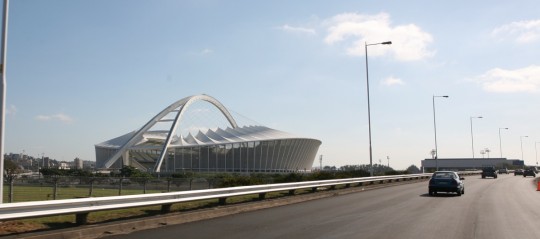
Next stop before I go is to get a minor radiator leak fixed. I want some peace on the road, and will do everything to avoid mechanical troubles. My oil pressure indicator still reads low, so I get it checked by an electrician who tells me the indicator is dead, and oil pressure is OK. This is one less thing to worry about.
By then, it is Wednesday morning, and time for me to leave Durban.
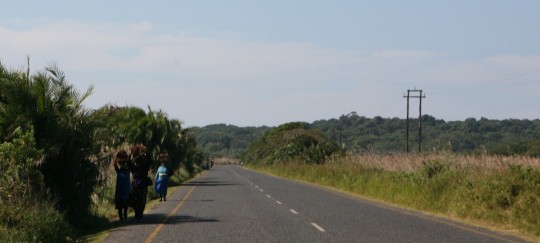
I go northeast, following the coast, and 260 km later (160 mi) I arrive in St. Lucia where I pay the dues to enter the St. Lucia Wetland Park (US$ 11).
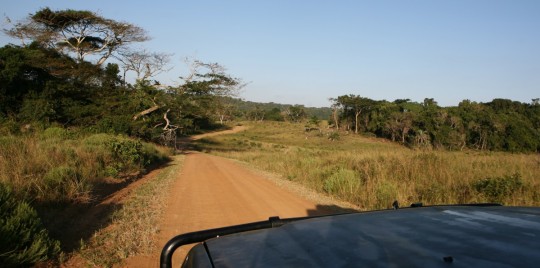
There I see my first animals, including hippos and rhinoceros within minutes of entering the park, at around 4 p.m. You spot animals more in the early morning, and before sunset, when the heat of the day is less intense. Night falls early in South Africa, and I am glad to resume my camping routine. I check in a campground close to the beach (US$11 a night).
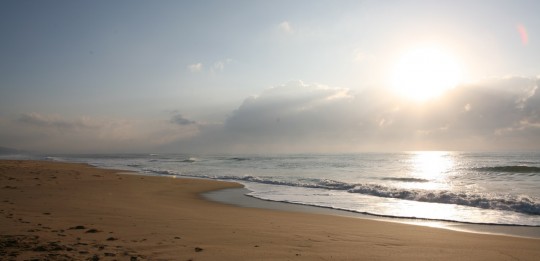
I bought plenty of food in the town of St. Lucia and I have a nice South African wine to celebrate my first night in the wild. I take my first malaria pill (Malarone), and fall asleep to the sound of the waves.
When I wake up, I go for a walk on the beach. The sun is already hot.
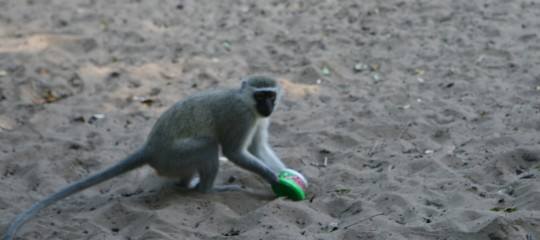
I get some early action, as I am eating breakfast, and some monkeys have some fun on me. They first steal my muffin as I fix coffee, and then take away the dish soap. I have no other, so I chase him until he gives it back to me.
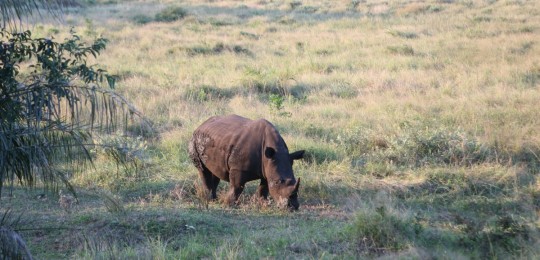
I spend the day re-organizing the content of the truck, and go take a first bath in the Indian Ocean. Lots of waves and warm water seem to characterize the location. Before night falls, I go for another drive in the park, and enjoy a nice sunset, as well as more animal sights.
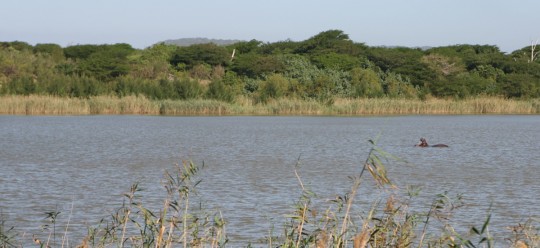
I get back to the campsite in the darkness, and put my alarm clock for 5:30 a.m. in the morning, to make sure I will get a glimpse at more wildlife as I leave the park. Later, I will go north in direction of the Kruger Park, marking the border of South Africa and Mozambique.
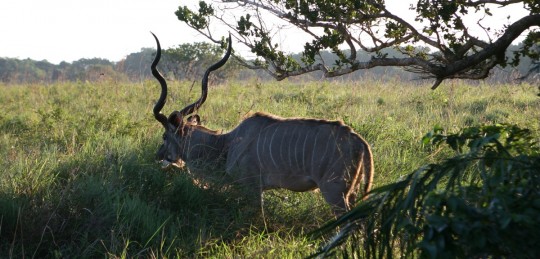
Despite what people told me, I would never have think I could see so much in such a short period of time. This is Africa.
